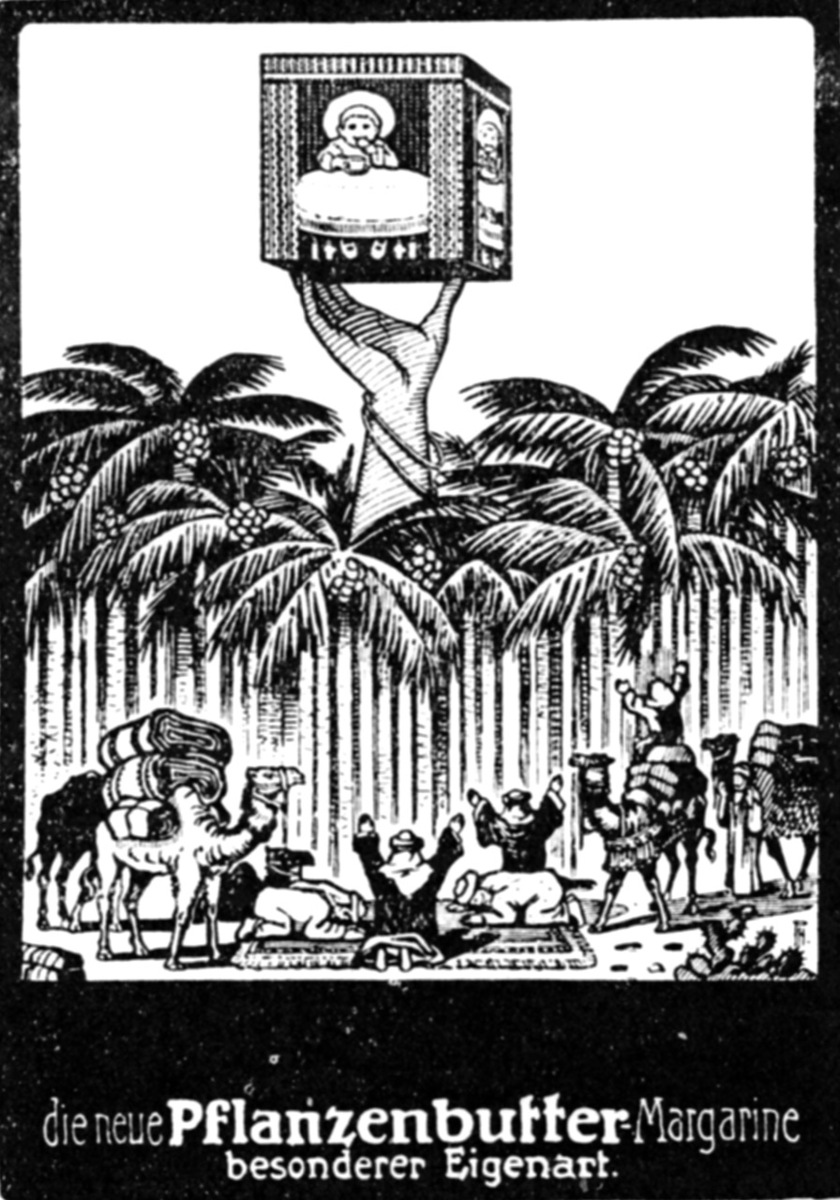Source

Source: from David Ciarlo, Advertising Empire: Race and Visual Culture in Imperial Germany. Cambridge MA, 2011, p. 78.
Margarine was a cheaper alternative to butter made from vegetable oil. The German chemist Wilhelm Normann had introduced the hydrogenation of fats in 1901, leading to dramatic expansion in the manufacture of margarine. As a “new” commodity, margarine was advertised heavily, to raise consumer awareness and interest.
In this advertisement by the Cologne firm of Benedikt Klein, the margarine packaging itself is held up out of the palm trees, high above genuflecting Arabs. The packaging is bedecked with illustrations of a well-fed German child. This advertisement both draws on Sütterlin’s famous poster for the 1896 Berlin Industrial Exhibit and blends it with an Orientalizing visual theme to add a sense of the “exotic” to the rather mundane commodity.

Source: from David Ciarlo, Advertising Empire: Race and Visual Culture in Imperial Germany. Cambridge MA, 2011, p. 78.